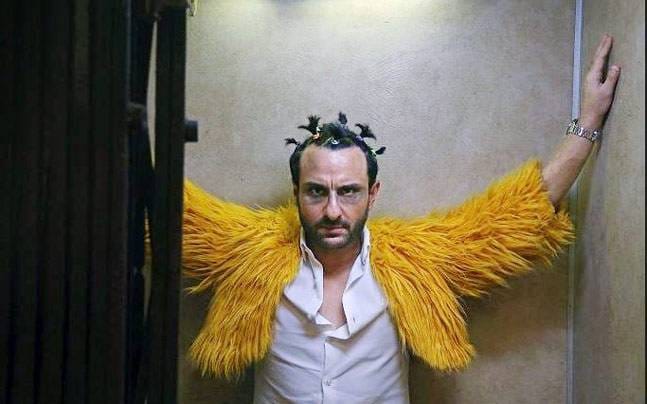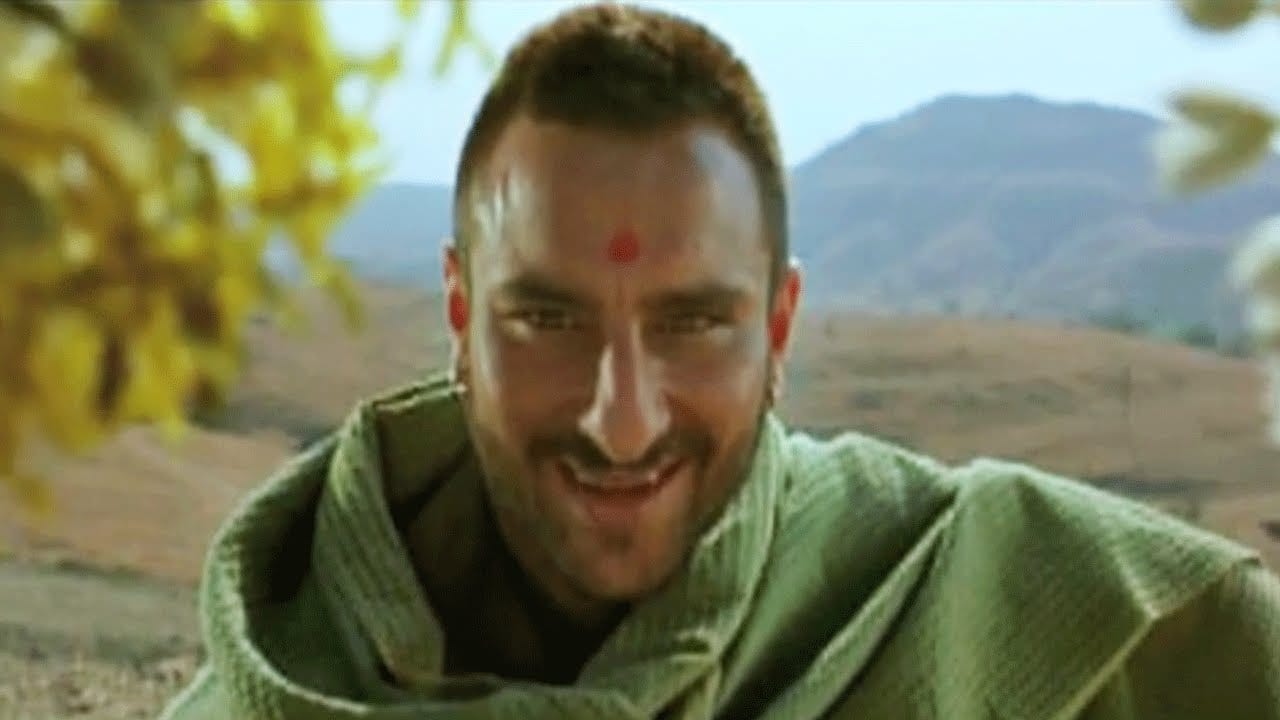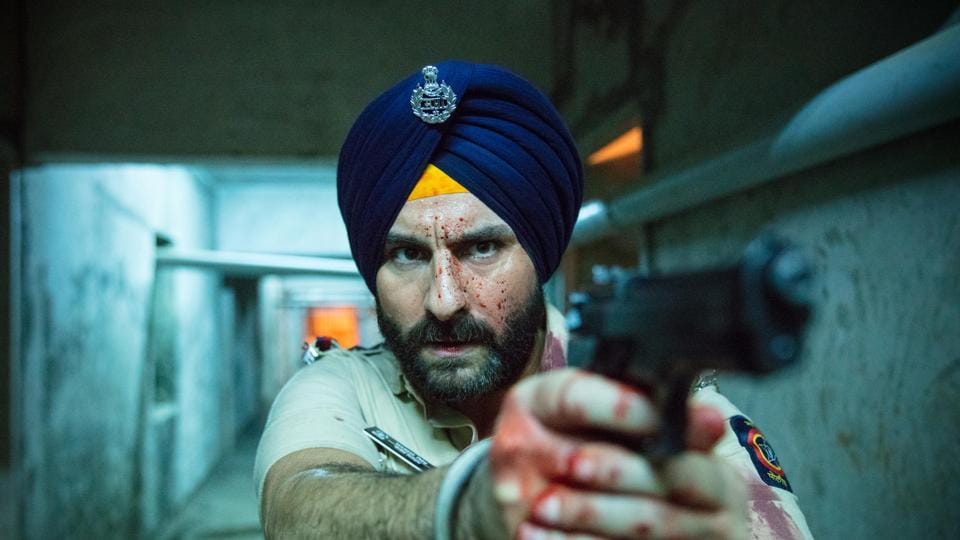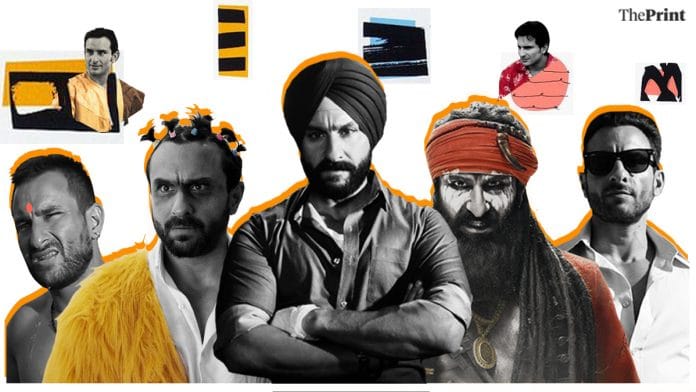The least feted of the Bollywood Khans is the most interesting of them all. One day he is ‘Chhote Nawab’ and next he is Uday Bhan Rathod, Aurangzeb’s most trusted and brutal general, in Tanhaji: The Unsung Warrior.
Saif Ali Khan, now 49, keeps reinventing himself, while the other Khans increasingly stagnate, their stardom engulfing them and their craft.
And yet, Saif was the one who has had to least prove his credentials.
The last Nawab Begum of Bhopal was Saif Ali Khan’s grandmother, his grandfather and father, erstwhile Nawabs of Pataudi, both captained Team India in cricket. His mother, Sharmila Tagore, a celebrated actress, traces her lineage to Rabindranath Tagore through both her parents. He attended the last Viceroy of India Lord Louis Mountbatten’s old school, Lockers Park in Hertfordshire, and then went to the 600-year-old Winchester College in Hampshire where, among other things, he developed a taste for James Bond, Clint Eastwood and Alain Delon. Not exactly the breeding ground for someone whose most iconic role till now has been one of a desi Iago, aka Ishwar ‘Langda’ Tyagi, in Vishal Bhardwaj’s earthy recreation of Othello, Omkara (2006). And Saif’s opening dialogue was: “Bewakoof aur chutiya main dhage bhar ka pharak hota hai.”
Also read: Laal Kaptaan review: Gorgeous cinematography & an ambitious idea can’t save this Saif film
The second coming
Since his second coming in Farhan Akhtar’s directorial debut at the turn of the millennium slice-of-life Dil Chahta Hai (2001), Saif Ali Khan has been at the forefront of every change in the film industry.
When Bollywood was looking for the female-friendly Metrosexual Man tailored for the new multiplex audience, Saif Ali Khan was the right man in the right place, acting in a string of polite romantic comedies (Hum Tum, 2004, Salaam Namaste, 2005, and Ta Ra Rum Pum, 2007). He even won a National Award for Best Actor for Hum Tum, which was controversial in a year of Shah Rukh Khan’s fine performance in Ashutosh Gowariker’s Swades.
When Bollywood decided to shed some of its posh South Mumbai-meets-Switzerland vibe, Saif starred in one of the first tandoori Westerns, Omkara. When Bollywood moved towards streaming services, he was the first big star to headline a digital series, Sacred Games (2018). And now with Bollywood having discovered drum-beating, nationalistic period spectacles, he is again at the crest of the wave, playing Uday Bhan Rathod in the forthcoming Tanhaji: The Unsung Warrior.

Also read: Shah Rukh, Aamir and Salman now starring in ‘Silence of the Khans’ under Modi rule
Mainstreaming durability
What makes Saif Ali Khan, who made his debut in films at 19 with Aashik Awara in 1993, so durable?
Raj Nidimoru, with Krishna D.K., directed him in Go Goa Gone (2013), where Saif played a supposed Russian mafioso-cum-zombie-slayer. Nidimoru says every time the industry has transformed, Saif has moved with it. “He excels in roles that have a certain veneer and where one has to put on a personality, but he is also enough at ease to almost play himself on screen. He also has the ability to surprise you. For instance, when he agreed to do Go Goa Gone, he was still at the top of his rom-com game. But he bet on it,” he says.
Saif is also one of the few stars who have managed to strike a balance between artistic success and commercial viability. Let’s not forget he is part of a much-photographed tabloid couple with Kareena Kapoor. They have their own mononym (Saifina, now rarely used), and a baby magnet to boot. Being Taimur’s dad is such an overpowering part of Saif Ali Khan’s life that it’s easy to forget he is also the easygoing dad of one of the industry’s brightest new talents – Sara Ali Khan. Watching father and daughter play off against each other on TV was one of the great joys of the 2018 season of Karan Johar’s ultimate insider show, Koffee with Karan.
That is the person director Imtiaz Ali, who directed him in Love Aaj Kal (2009), knows. “As a person, the Saif I know is an exciting guy with an excited brain. He is funnier and more down to earth than you think and thoroughly incapable of keeping his secrets. As for his personality, I have nothing unique to say. He is the quintessential urban, thinking man from a sophisticated background.”
Saif Ali Khan is someone who would have no problems going in for a manicure onscreen seconds after falling in love in Kal Ho Naa Ho (2003), or role playing in the bedroom to please his lover in Cocktail (2012). Playing the cartoonist in Kunal Kohli’s Hum Tum and the chef in Siddharth Anand’s Salaam Namaste, it could be said that Saif went a long way in making such career choices part of mainstream consciousness. No other Khan would have done Salaam Namaste.
So, one would imagine a troubled Sardar who devours his mother’s parathas in Sacred Games (Netflix) or a soldier in the Battle of Buxar in Navdeep Singh’s Lal Kaptaan, are not exactly familiar choices for him. But as Navdeep Singh says: “The first time I really noticed Saif was in Dil Chahta Hai where he kicked off his new urbane, cool avatar. But I think his personal sensibilities, even back then, drew him to more experimental roles (compared to mainstream Hindi cinema) like those in Being Cyrus (2006) and Omkara.”
“These days, he’s experimenting a lot more frequently. He seems to be in a space where he’s comfortable with himself and is willing to play with stuff that attracts him at a personal level without box office pressures. He’s well-read and aware of the world outside the Mumbai industry. That probably leads him to make the kind of films, as he once told me, which he can sit back with in his old age with a glass of whisky and watch with a degree of accomplishment,” added Singh.

Also read: Saif Ali Khan in Sacred Games: Is Netflix the only way for Bollywood Khans to stay relevant?
Edge of tomorrow
Whether it is the suave Gordon Gekko-type stockbroker in Baazaar (2018) or the quirky LSD-user in Akshat Verma’s Kaalakaandi (2017), Saif is willing to put himself out there. With his craft in place.
Director Vikramaditya Motwane says Saif works very hard. He knows his dialogues, he has no issues doing multiple pages in one go, and he likes to discuss his work. “Plus, he is always trying to perfect his stuff. Sometimes, he comes back after hours and tells me he wants to do a specific close-up again,” Motwane says.

Motwane says Saif was not the obvious choice for Sartaj Singh in Sacred Games but he was “my first choice because of his eyes”. “They’re very expressive, they can show a lot of depth and pain without doing too much with his face. The character [Sartaj Singh] doesn’t do much on the surface, but has a lot of conflict and emotion hidden underneath. Saif is great at that. A good example is Sacred Games episode when Parulkar tells him Megha [his wife] left at the right time. The reaction close-up of Saif was absolutely perfect.”
These are the joys Saif has worked hard to achieve. It’s a long haul from the floppy-haired teenager, who was thrown out of Kajol’s debut movie, Bekhudi (1992), married an older Amrita Singh (daughter of controversial Sanjay Gandhi aide Rukshana Sultana) and created a minor kerfuffle in the pre-Nickyanka days.
Personally and professionally, Saif Ali Khan has always lived on the edge of tomorrow.
The author is a senior journalist. Views are personal.






